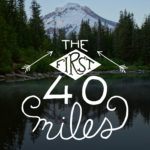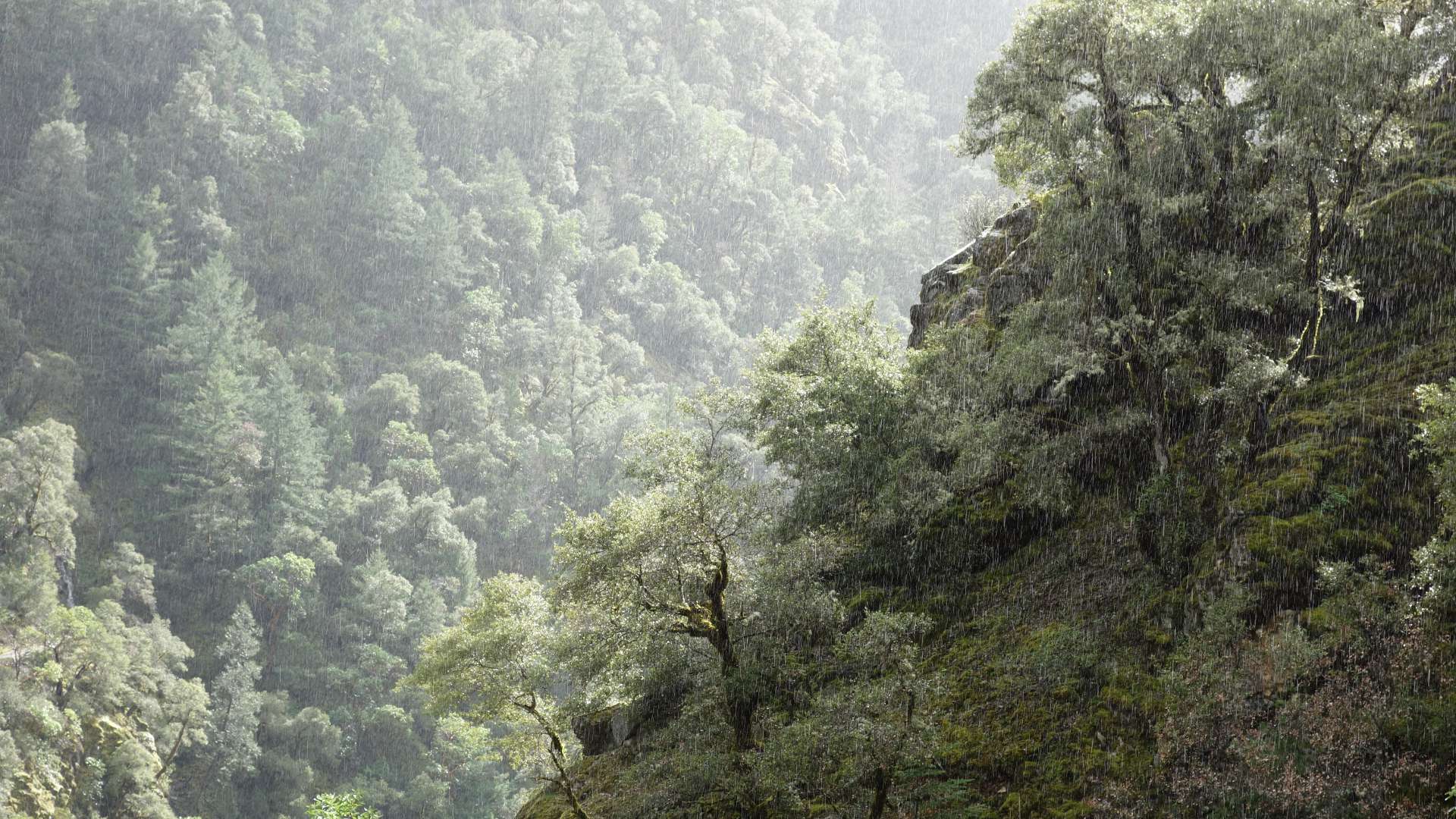Podcast: Download (Duration: 34:21 — 32.4MB)
Show Notes: Episode 125
Today on the First 40 Miles, DRIP: The Rain Episode. Don’t let the rain keep you from getting outside! We’ll have some great gear recommendations for your next drippy trip. Then, a 3 layer rain jacket designed to sock it to Mother Nature. For the Backpack Hack of the Week, a way to keep your maps from disintegrating in a downpour. And we’ll leave you with a little trail wisdom from a man who is known for his humor…or wisdom… we can’t tell the difference.
Opening
- Whether you live in a drier climate or a soggy climate, rain can affect your hiking and backpacking experience.
- Risks of rain—it’s not just an inconvenience! (flash floods, lightning, hypothermia)
- Rain can vary by region
- Hiking in Utah in the rain: flash floods
- Hiking in New Mexico in the rain: often bursts, warm, accompanied by thunder and lightning
- Hiking in New York in the rain: rainstorms w/ lightning
- Hiking in Oregon in the rain: drizzly, tiny/misting rain that soaks quickly, can rain for hours
- Challenges and blessings of rain
- Staying dry vs. staying wet (Redwoods trip and Josh’s feet…)
Top 5 Things You’ll Need for Rainy—nay, Soggy—Trips
Rain gear
- Rain gear has improved over the past 30 years! Of course you can still find the yellow Polyvinyl Chloride rain slickers, but they’re heavy and will make you sweaty.
- There are some great lightweight options:
- One we’ve talked about before: FroggToggs. We’ve tried their cheapest and their mid-range rain gear.
- Rain kilt (https://www.antigravitygear.com/shop/clothing/antigravitygear-rain-kilt/) a long apron type of clothing that covers your pants area, great for hiking in warm rain, UL
- How about rain gloves? Maybe we don’t really think about our hands when we’re considering rain gear, but hands that are soaked with rain, can get cold really quickly, and that can make it hard to do simple tasks like pump water or set up a tent. If you value your finger dexterity, then Hanz makes waterproof gloves (and waterproof socks for that matter) and recently Hanz has come out with their next gen of their waterproof knit gloves: Hanz Waterproof Tap-Knit Touchscreen Gloves. The Hanz waterproof gloves (both the touchscreen version and the original version) are stretchy, slim fitting (like skinny jeans for your hands), comfortable, {waterproof , wicking and breathable}. Really, for what they do, they are thinner than you’d expect and allow you to have full dexterity.
- Your clothing doesn’t have to be waterproof, but make sure that you’re wearing either synthetic clothing that will dry out quickly or clothing that retains its insulation power even when wet (alpaca or wool).
- “Wool is warm when wet” It’s true…as long as the water doesn’t go above 35 percent of the weight of the wool clothing. So if your shirt is 200 grams, you can have about 70 grams of water soaked into the shirt and still be warm. So about 1/4 cup of water. So about 1,334 raindrops.
- If you’re insulating layer of clothing is filled with down—be careful!
Waterproof Map (and paper!)
- Many maps are waterproofed now—yay science! They’re made of a super thin, paperish material. Lighter than paper, tear-proof, and very durable.
- Green Trails Maps
- National Geographic Maps
- Pocket Profile maps sold by AntiGravity Gear (JMT, Sections of AT—or the whole AT which is 22 small maps)
- You can also print out your own waterproof maps using Rite in the Rain printer paper. They’re not tear-proof, but they will repel water. Rite in the Rain also has every size and type of notebook imaginable if you’re looking to bring a waterproof trail journal
Waterproofed Shelter
- If you want your tent to be watertight you’ve got to have a few things in place:
- Rainfly (with an up-to-date waterproofing treatment on it)
- Bathtub floor: It’s the part of the tent where the waterproof bottom goes a few inches up the sides. Most tents have them, but if you have an ultralight tent that doesn’t, then you’ll need to be careful about where you pitch your tent…meaning if you pitch it in a dip in the campsite, you will be sleeping in a bathtub if it rains. However if you pitch on higher ground, on top of forest fluffy stuff, you’ll have a better chance of staying dry when it rains.
- Footprint: a separate sheet of plastic you put under your tent that is exactly the size of your tent floor that prevents water from seeping up through the tent floor.
- Taped seems: Your tent was probably factory-treated with waterproofing, however, the places where the tent was sewn together leave tiny holes in the fabric that rain loves to sneak in through. If your tent doesn’t have taped seems or sealed seems, you can do this yourself with a product called Seem Seal. I’m also wondering if someone has tried it with bathroom caulk…just curious.
- You also may need to re-apply waterproofing. We’ve used the Nikwax Solarproof which protects your tent again rain and rain’s arch nemesis—the sun.
“The Absorber” Synthetic Drying Chamois
- Synthetic drying chamois is made of PVA (Poly Vinyl Alcohol) which is this spongy, rubbery material that soaks up water. It absorbs best when it’s damp
- Works on everything from drying your car, to drying your dog—but my favorite use is drying my gear on rainy backpacking trips.
- I cut mine into quarters and added a grommet so I can hang it from the outside of my pack. Before I get into the tent on a rainy trip, I wipe everything off with the absorber. Then in the morning, I’ll even wipe down the tent. It’s amazing how much water The Absorber absorbs.
Waterproof stuff sacks
- Having waterproof stuff sacks in your pack is actually more important that having a waterproof pack.
- Don’t count on your pack to keep your gear dry…too many points of entry for those sneaky raindrops. Even if you spray your pack with waterproofing spray…
- And if you want to go budget and stay dry, it’s as simple as using a garbage bag to line your pack, then using 1 or 2 gallon Ziploc bags for your gear.
SUMMIT Gear Review: Montane Minimus 777 Rain Jacket
Structure
- Many rain jackets have 2.5 layers, but the Minimus 777 has a 3-layer construction that uses a 7-denier nylon face fabric, 7-micron laminate film, and 7-denier tricot backing paired with micro-taped seams.
- So thin: waterproof yet breathable
- Built specifically for scenarios in which maintaining a light load is your top priority
- Elastic cuffs
- Articulated construction
- Waterproof zippers
Utility
- Chest pocket that can also be used for stuffing the jacket for easy storage
- Has a generous hood with brim
Mass
- Weighs 4.9 ounces
- 2 year manufacturer warranty
- Compresses into its stuff pocket
Maintenance
- Put away dry
- Wipe clean
Investment
- $299
Trial
- Josh’s experience with the Montane Minumus 777
Backpack Hack of the Week: Nikwax TX Direct Waterproofing Spray for Waterproofing Your Map
- Typically Nikwax Waterproofing Spray is used on gear, shoes, tents—but it can also be used for your map!
- Get map wet (with water or you can saturate it with an initial spraying of TX Direct)
- Spray your map using Nikwax TX Direct
Trail Wisdom
“It always rains on tents. Rainstorms will travel thousands of miles, against prevailing winds for the opportunity to rain on a tent.”
-Dave Barry

